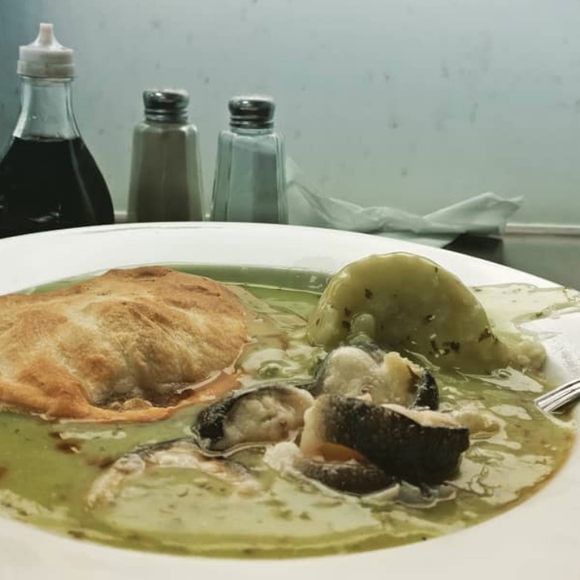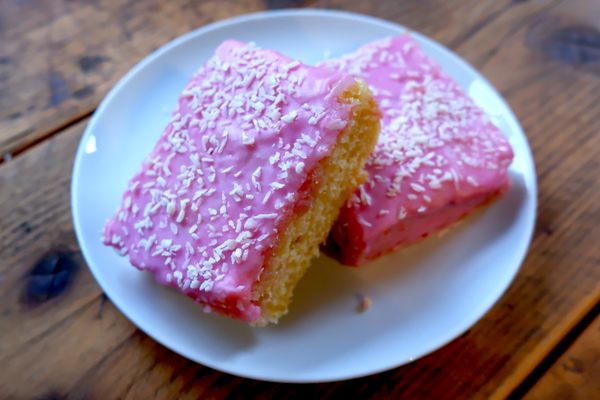Meats & Animal Products
Jellied Eels
No traditional East Ender meal is complete without pie, mashed potatoes, and gelatinous river creatures.
In the 1700s, Londoners ate jellied eels as a cheap, nutritious meal. Cockneys grew to love the taste of the creatures, which were readily available by way of the River Thames. In response, pie-and-mash shops (hubs for inexpensive mutton pie and mashed potatoes) added eel to their offerings.
Shopkeepers across London’s East End prepared the working-class favorite by chopping and boiling eels with vinegar, sliced onion, peppercorns, bay leaves, and salt. As the mixture cooled, the cooked animal’s gelatinous proteins solidified into savory jelly surrounding the meat. Diners doused the aspic-like substance in hot chili vinegar or savored it alongside pie and mash covered in “liquor” (an alcohol-free parsley sauce).
Centuries later, rationing during World War II caused a peak in jellied eel popularity. By the war’s end, London alone boasted more than 100 eel-and-pie shops. But in the subsequent decade, Londoners began to lose interest as supply waned—a result of the increasingly polluted Thames. In 1957, the Natural History Museum declared the river biologically dead. Newspapers called it “a badly managed open sewer.”
Shopkeepers kept the tradition alive by serving whatever jellied eels they could. River fish populations have fluctuated ever since, but the Thames isn’t expected to return to its once-infested state of glory. Despite no longer serving as a poor man’s convenience food, sweet jellied eels continue to attract fans to the traditional outposts that remain.
Written By
 Tony Dunnell
Tony Dunnell










